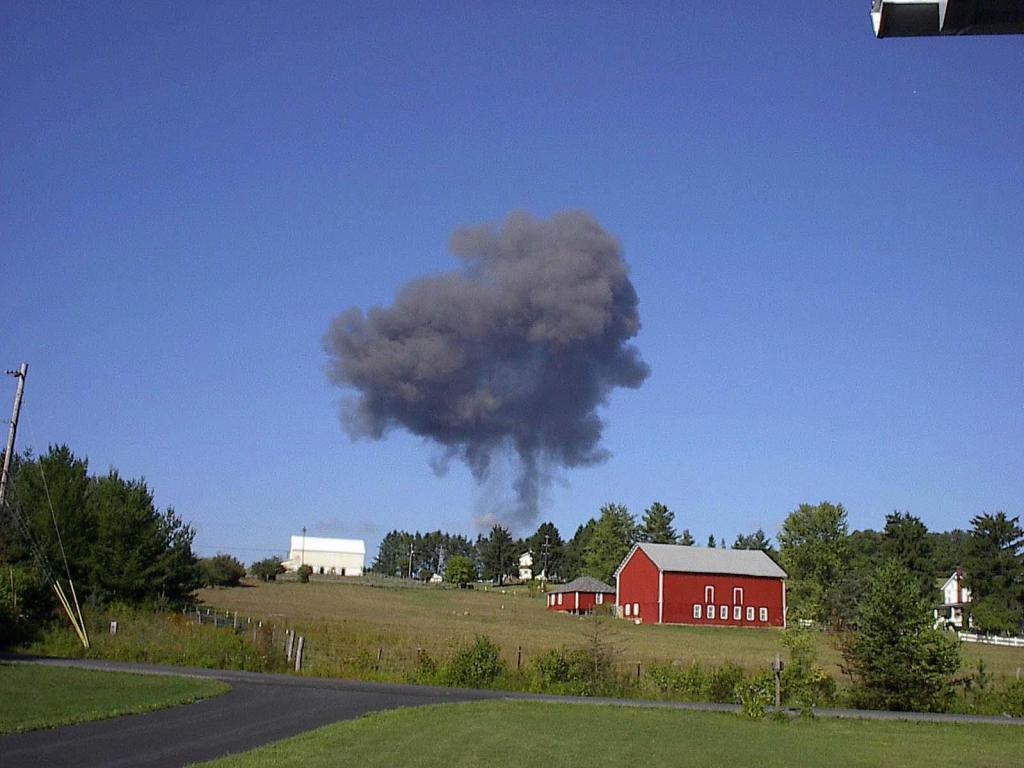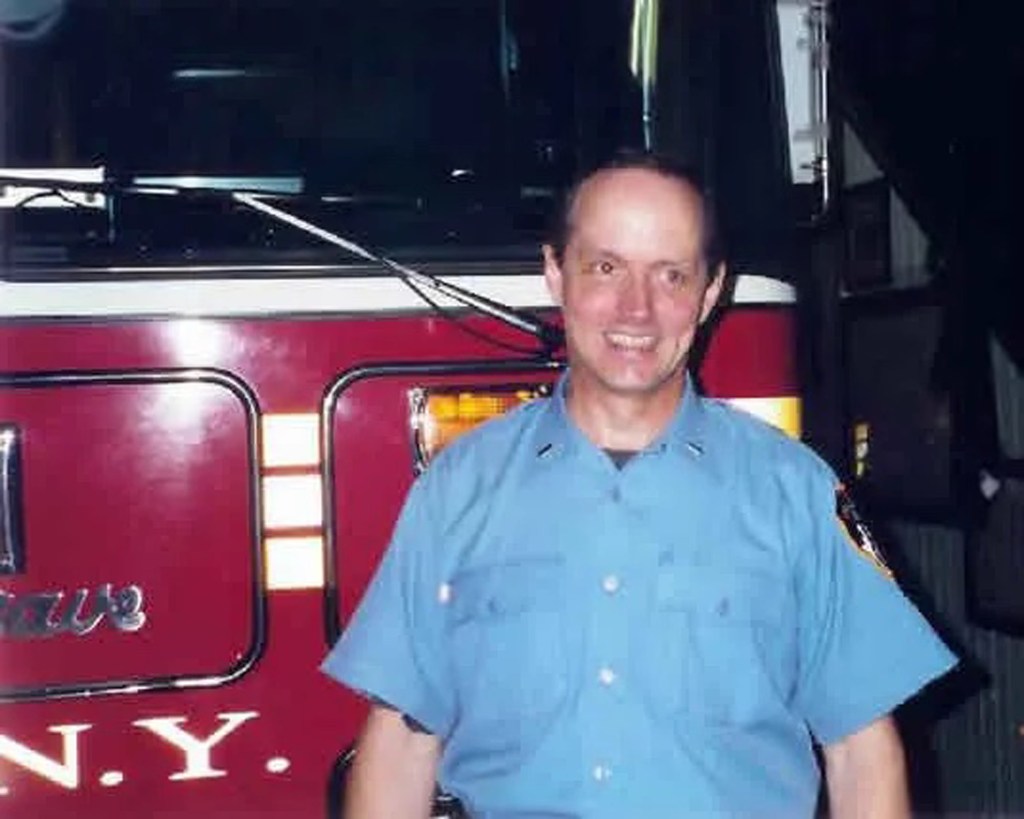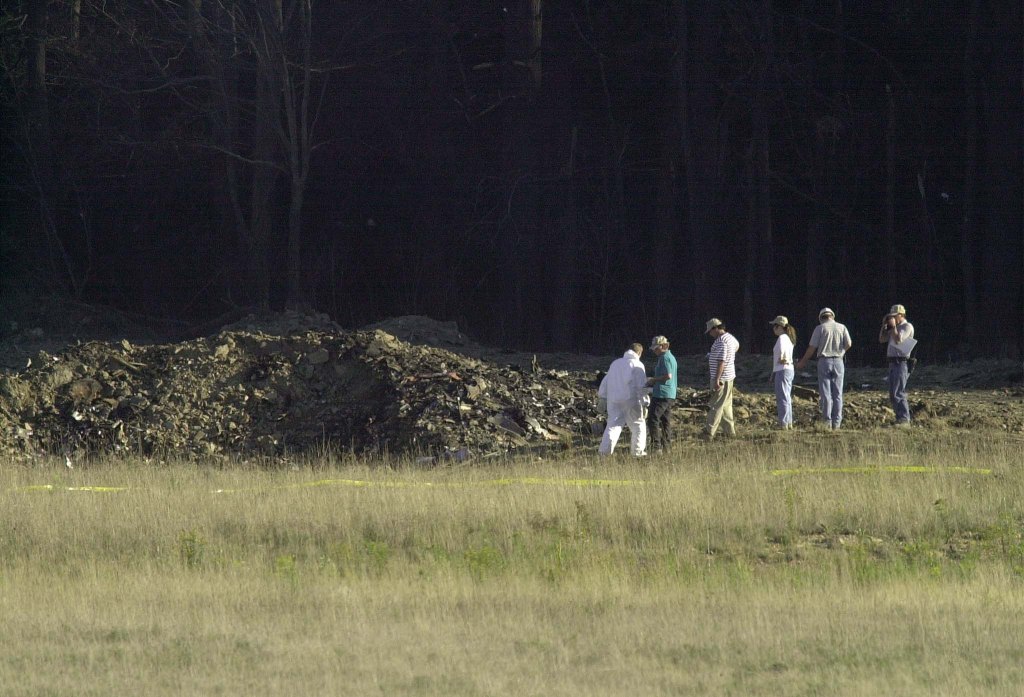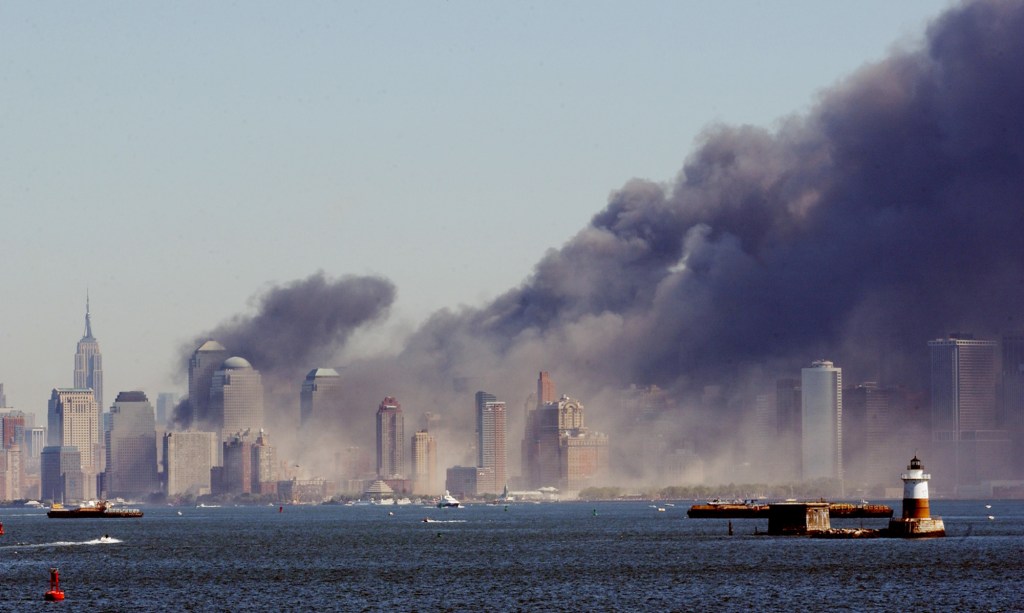TWA pilot who ‘dodged’ hijacked plane on 9/11 an unsung hero
A TWA pilot who narrowly averted collisions with hijacked planes headed to attack the World Trade Center and the US Capitol on Sept. 11, 2001, is being remembered 22 years later as an unsung hero.
The little-known incidents are buried in the history of 9/11 when 2,977 people were killed at the World Trade Center, Pentagon, and on the four planes commandeered by Islamic terrorists.
The pilot on TWA Flight 3 took “evasive action” twice before safely landing — first to avoid colliding with United Flight 175, which struck the World Trade Center, and then Flight 93, which crashed in Pennsylvania, according to a New York-based flight attendant who was on the crew.
“There were two near-misses,” she told The Post.
The unflappable pilot was never memorialized, or even publicly identified, in the 9/11 Commission Report or other accounts.
Yet to the passengers on that fateful flight, he is unforgettable.
“He saved our lives, without a doubt,” said retired FDNY Lt. Charlie Hubbard, who was one of them.
TWA’s Boeing 767 took off from JFK for St. Louis at 8:47 a.m. – almost exactly when hijacked American Airlines Flight 11 crashed into the North Tower at 8:46 a.m. — the first to strike the World Trade Center.
Commanding the cockpit was “George,” said the flight attendant, who could recall only his first name.
As the TWA jet ascended in the clear, blue sky, passengers spotted a shocking sight – the World Trade Center on fire.
Minutes later, the jet confronted United 175 as it headed toward NYC from Boston, the flight attendant said. “We were scissoring up and down,” she recalled, referring to a defensive maneuver.

“I thought we were going to crash,” one of the terrified TWA passengers told ABC News in a resurfaced video clip.
The plane was “shaking” as it “went down and came back up,” he said. “And then, you can just see, like the plane just bypassed us really close.”
After learning that United 175 struck the South Tower at 9:03 a.m., the TWA flight attendants pushed food carts up against the cockpit door to guard against a possible hijacking.
The pilot warned the crew “he’d be standing behind the door with an ax,” the New York attendant recalled.
Let into the cockpit to remove the pilots’ food trays, she recalled a chilling warning on the speaker: “This is a national emergency. By order of the federal government, any plane still in the sky in 20 minutes will be shot down by friendly fire.”
The pilot first planned to make an emergency landing in Indianapolis but was diverted to Dayton, Ohio.
Passengers able to phone home “started screaming that the Pentagon was hit,” the flight attendant recalled.
Terrorists on American Airlines Flight 77 crashed into that building at 9:37 a.m.
Then “proximity alarms” in the TWA cockpit warned of another plane flying within 1,000 feet.
The pilot took evasive action again — to get away from Flight 93, out of Newark, which was heading toward Washington, D.C., the flight attendant said.
Flight 93 crashed in a field in Shanksville, PA, at 10:03 a.m. after brave passengers fought to wrest control from the hijackers.
After pilot George landed in Dayton, he confirmed, matter-of-factly, that he had avoided a plane that struck the WTC.
“Well, he was up there when we were coming from New York. So what we had to do was — they (flight control) were not talking to him, and he was changing his heading and his altitude, so they cleared us to deviate however we had to stay away from him,” he told WABC, which did not name him.
“We had him in sight — it was a nice day in New York. We were out of the clouds, which helped a lot. We just, you know, dodged him.”
The TWA crew arrived at the St. Louis hub two days later to applause, and learned just how close they came to the second skyjacked jet, the flight attendant said: “We missed their tail by 500 feet.”
“We’re lucky to be alive,” said Hubbard, who had just retired from Engine 5 on the Lower East Side and was headed to Hawaii with his brother, James, a nurse, who died of cancer six years ago.



Hubbard recently recounted the harrowing experience on X, formerly Twitter.
The fact that no collision occurred helps explain why the near-misses were forgotten, said Mary Schiavo, a former inspector general of the US Transportation Department and one of several lawyers who won $500 million in airline settlements for the families of those killed.
Any flight crew that takes evasive action to avoid a collision would have to report it to their airline, which in turn would file a form with the Federal Aviation Administration, Schiavo said.
American Airlines, which absorbed TWA later in 2001, did not return messages.
A spokesman for the FAA, when asked for any reports on 9/11 near-collisions, provided none.
Read the full article Here


